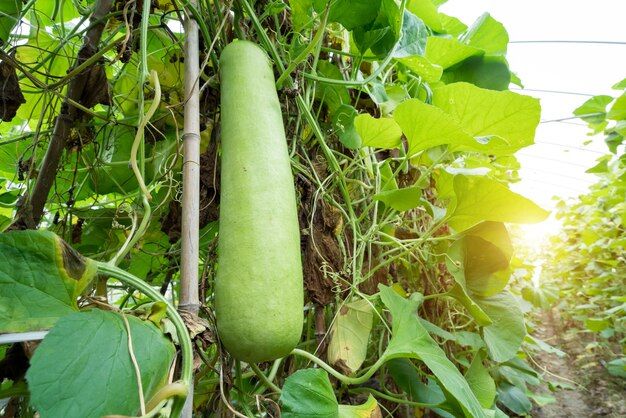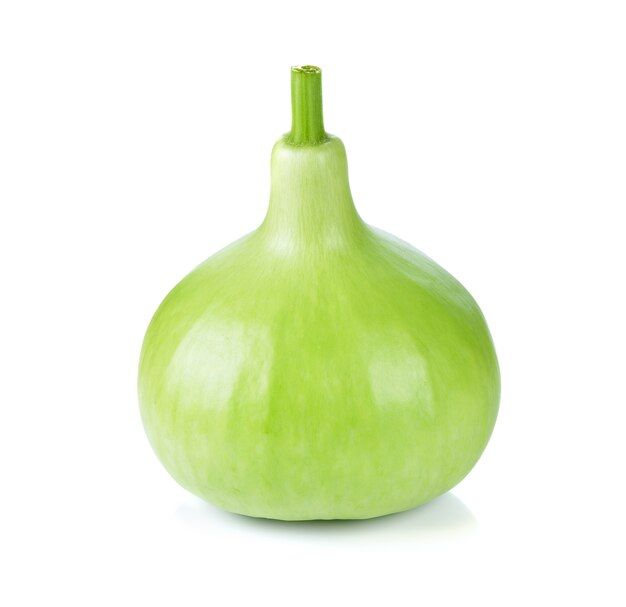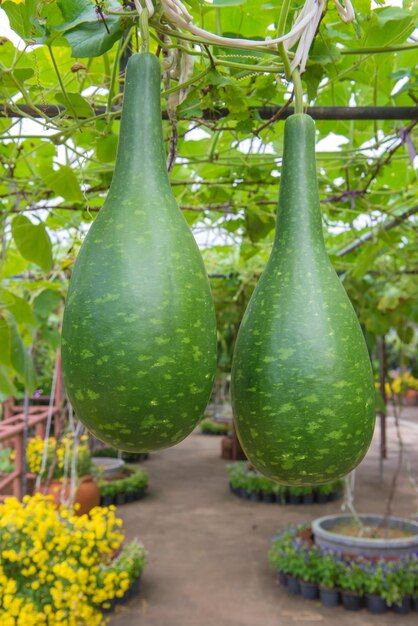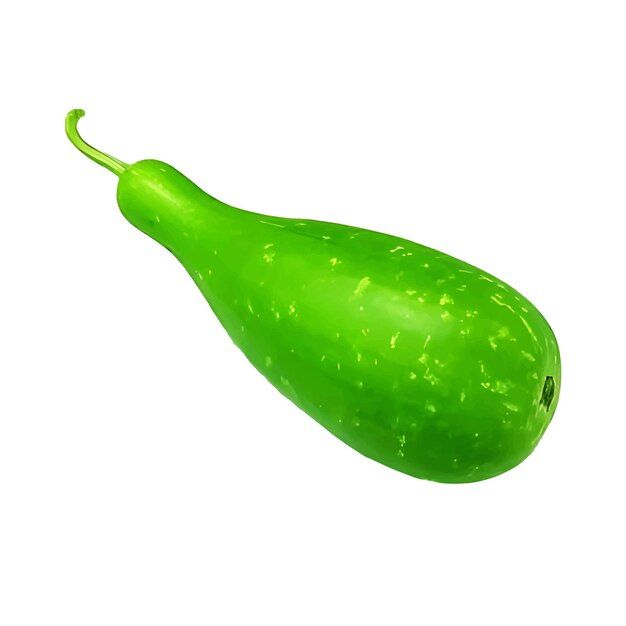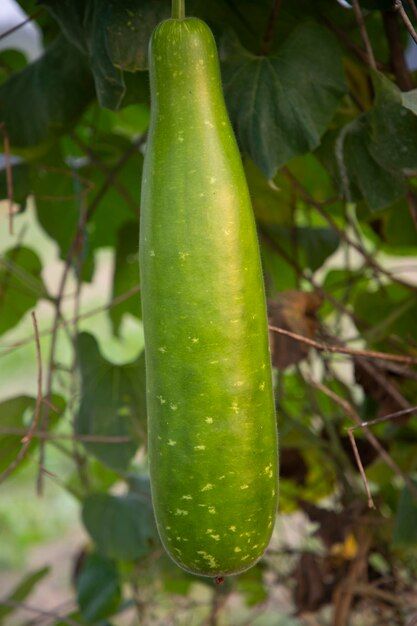Gourds are a family of plants (Cucurbitaceae) that include a variety of fruits, ranging from ornamental to edible varieties. Growing gourds can be an enjoyable and rewarding experience, whether for decorative purposes or for harvesting edible fruits. Here’s a step-by-step guide on how to grow gourds effectively:
A. Choosing the Right Gourd Varieties
Before you start growing gourds, it’s essential to select the appropriate type. There are many different varieties, including:
Edible Gourds: Examples include bitter melon, bottle gourd, and pumpkin.
Ornamental Gourds: Used for decoration or crafting. These can include varieties like snake gourds or mini pumpkins.
For edible purposes, ensure you are selecting gourds that are suitable for your climate zone and growing season. Ornamental gourds are generally grown for their appearance, and their nutritional value is often not considered.
B. Selecting the Growing Location
Gourds require a lot of space to spread, so choose a location that gets full sun for most of the day. Gourds prefer well-drained soil that is rich in organic matter. Before planting, amend the soil with compost or aged manure to ensure it is fertile and nutrient-rich.
Gourds are vine plants, and they can grow on the ground or be trained to climb trellises. If you want to conserve space or improve air circulation around the plants, consider installing a trellis or vertical support.
C. Planting Gourds
Gourds are typically grown from seeds. Here’s how to plant them:
When to Plant: Plant gourds in the spring after the last frost date when the soil has warmed up to about 70°F (21°C).
Spacing: Gourds need plenty of space, so plant seeds 6-8 feet apart, as they will spread out significantly. If using a trellis, space the plants at least 4 feet apart, and make sure the trellis can support the weight of the growing gourds.
Planting Depth: Plant the seeds 1-2 inches deep in the soil. Water gently to moisten the soil, and then cover the seeds with a light layer of soil.
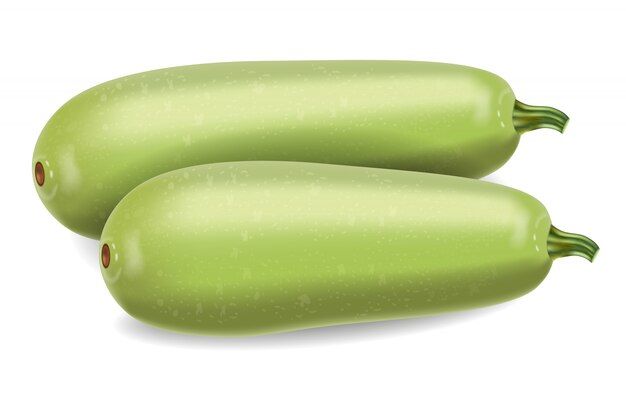
D. Caring for Gourd Plants
Once planted, gourds require consistent care:
Watering: Gourds are relatively thirsty plants, especially during hot weather. Water deeply and consistently, ensuring that the soil remains moist but not waterlogged. Be mindful not to overwater, as this can lead to root rot.
Fertilization: As gourds are heavy feeders, they will benefit from regular feeding. Apply a balanced fertilizer high in potassium, phosphorus, and nitrogen, or use compost tea to encourage healthy growth.
Weeding and Mulching: Keep the area around your gourd plants free from weeds, which can compete for nutrients. Mulch around the base of the plant to help retain moisture, prevent weed growth, and maintain a stable soil temperature.
E. Pest and Disease Control
Gourds are generally hardy, but they can attract pests like squash bugs, cucumber beetles, and aphids. To minimize pest issues:
Inspect your plants regularly for signs of pests or diseases.
Consider organic pest control methods like neem oil or insecticidal soap.
Rotate your crops each season to reduce the risk of soil-borne diseases.
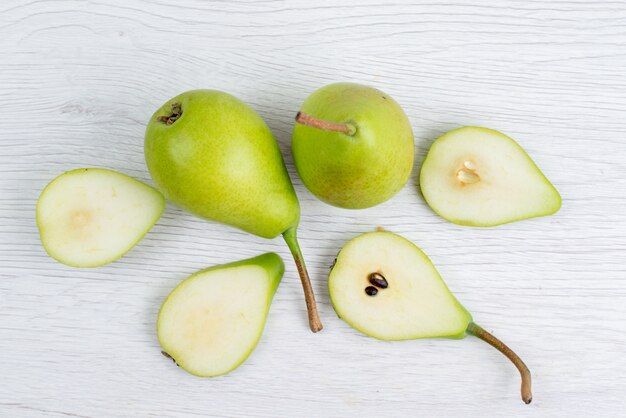
F. Harvesting Gourds
Gourds can take a long time to grow, typically between 90 to 150 days, depending on the variety. They are ready to harvest when they have reached their full size and color, and their skin is hard. For edible gourds, make sure they are mature but still firm. Ornamental gourds may not be edible but can be harvested when they have fully developed and have a hardened shell.
Cutting the Gourd: Use a sharp knife or pruning shears to cut the gourd from the vine, leaving a small section of the stem attached. This helps the gourd last longer.
Curing: After harvesting, many gourds need to be cured before storage. To cure, place the gourds in a warm, dry location for 2-3 weeks to allow them to dry out and harden completely. This is particularly important for ornamental gourds.
The Benefits and Nutritional Value of Eating Gourds
Gourds are not only versatile in terms of use, but they also offer numerous health benefits. These fruits are a rich source of essential nutrients that can positively impact overall health. In this essay, we will explore the various vitamins, minerals, and health benefits of consuming gourds, emphasizing their nutritional value.
A. Nutritional Composition of Gourds
Gourds, especially edible varieties like bottle gourd, bitter melon, and pumpkin, are packed with beneficial nutrients. Here are some of the main nutrients found in gourds:
Vitamins:
Vitamin C: One of the primary benefits of eating gourds is their high vitamin C content. Vitamin C is essential for the growth and repair of tissues, as well as for the immune system. It is also an antioxidant that protects the body from damage caused by free radicals.
Vitamin A: Gourds like pumpkin and squash are rich in beta-carotene, which is a precursor to vitamin A. Vitamin A is vital for maintaining healthy vision, skin, and the immune system. It also plays a role in promoting healthy cell growth.
B Vitamins: Many gourd varieties, particularly bottle gourds, contain B vitamins like folate and niacin. These vitamins help support the nervous system, energy production, and healthy red blood cell formation.
Minerals:
Potassium: Gourds are rich in potassium, an essential mineral that helps regulate fluid balance, muscle contractions, and nerve signals. Consuming foods high in potassium can help lower blood pressure and reduce the risk of stroke.
Magnesium: Magnesium is important for nerve function, muscle relaxation, and maintaining a healthy heart. It also supports the body’s energy production.
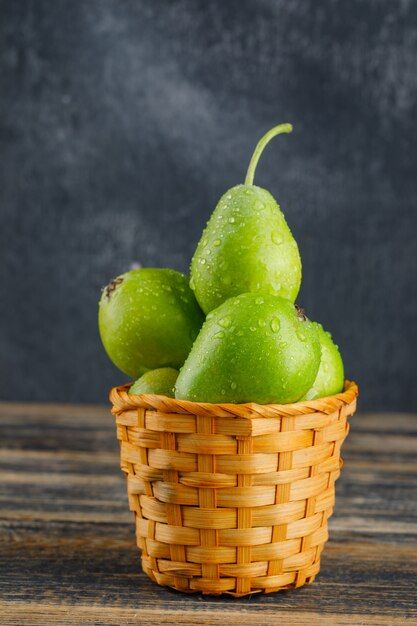
Fiber: Gourds are an excellent source of dietary fiber, which is important for digestive health. Fiber helps prevent constipation, promotes regular bowel movements, and can contribute to a feeling of fullness, aiding in weight management.
Water Content: Many gourds have a high water content, particularly varieties like bottle gourd, making them hydrating foods that help maintain proper fluid balance and support overall health.
B. Health Benefits of Eating Gourds
Consuming gourds regularly can have numerous positive effects on the body. Below are some of the most notable health benefits:
A. Promotes Digestive Health
The fiber content in gourds plays a significant role in digestive health. Fiber helps regulate bowel movements, prevents constipation, and promotes the growth of healthy gut bacteria. Regular consumption of gourd-based dishes can aid in maintaining a healthy digestive system.
B. Supports Weight Management
Gourds are low in calories but high in water and fiber, making them an excellent choice for anyone looking to lose or maintain weight. The high water content can help keep you hydrated, while the fiber helps you feel full for longer, reducing overall calorie intake.
C. Improves Heart Health
The potassium and magnesium content in gourds helps regulate blood pressure and support heart health. Potassium helps counteract the effects of sodium in the diet, which can lower blood pressure and reduce the risk of stroke. Additionally, the fiber found in gourds can help lower cholesterol levels, which contributes to a healthier cardiovascular system.
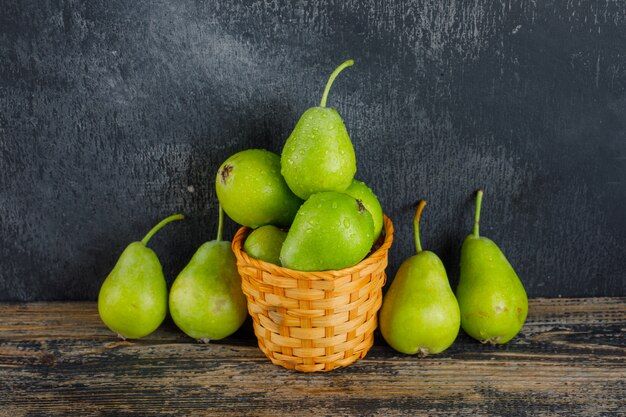
D. Enhances Immune Function
Vitamin C is a powerful antioxidant that boosts the immune system by protecting cells from oxidative damage. Regular consumption of gourds can help enhance the body’s ability to fight infections and illnesses, especially during the colder months when colds and flu are more prevalent.
E. Reduces Inflammation
Gourds like bitter melon have anti-inflammatory properties that can help reduce inflammation in the body. Chronic inflammation is linked to numerous health issues, including arthritis, heart disease, and diabetes. Incorporating anti-inflammatory foods like gourds into your diet can help manage inflammation and support overall health.
F. Regulates Blood Sugar
Bitter melon, in particular, has been shown to have blood sugar-lowering effects. It contains compounds that mimic insulin, helping regulate blood sugar levels in individuals with type 2 diabetes. While more research is needed, bitter melon’s role in blood sugar regulation shows promise as a complementary treatment for diabetes.
G. Skin Health
Vitamin A, found abundantly in gourds like pumpkin, is essential for maintaining healthy skin. It supports cell turnover, promotes wound healing, and can help prevent skin conditions such as acne. Consuming foods rich in vitamin A can contribute to a radiant complexion and healthy skin.
C. Conclusion
In conclusion, gourds are not only versatile in culinary uses but also offer a wide range of health benefits. With their rich nutritional profile, including vitamins, minerals, and fiber, they support digestive health, heart health, immune function, and more. Whether you choose to enjoy them in savory dishes, soups, or even smoothies, incorporating gourds into your diet can have a positive impact on your overall well-being. Additionally, growing gourds at home allows you to enjoy fresh, homegrown produce that is both nutritious and delicious.
By understanding the growing process and the health benefits of gourds, you can fully appreciate these unique and nutrient-packed fruits. Whether you’re cultivating ornamental or edible varieties, gourds are a worthwhile addition to any garden and diet.
I can provide more details on specific sections of the essay, such as expanding on the health benefits of eating gourds or offering a more in-depth discussion of the gourd-growing process. Here are a few possible areas we can dive into:
A. Expanding on Health Benefits
Specific Varieties of Gourds and Their Health Effects: I can talk more about individual gourd varieties like bitter melon, bottle gourd, and pumpkin, explaining their unique health benefits.
Scientific Studies and Evidence: We could look into specific research studies that validate the health claims about gourds, particularly around managing blood sugar, supporting digestion, and providing antioxidants.
Gourds for Specific Populations: How different groups—such as people with diabetes, heart conditions, or those on weight-loss journeys—can benefit from eating more gourds.
B. Growing Gourds in Different Climates
Climate Considerations: Some gourds are better suited for warmer climates, while others can be grown in temperate or cooler zones. I can describe how to adjust care and harvest techniques based on the region you’re growing in.
Managing Growing Seasons and Frost: Gourds take a long growing season, so I can talk about how to extend the growing season with techniques like indoor seeding or using row covers.
C. Recipe Ideas and Uses for Gourds
Creative Ways to Incorporate Gourds into Your Diet: How to prepare gourds in different types of cuisines (soups, stews, salads, juices, etc.).
How to Prepare Gourds for Maximum Nutritional Benefit: Tips on cooking or preparing gourds to preserve their nutrients.
D. Cultural Significance and Varieties
Gourds in Global Cuisine: Exploring how gourds are used in different cultures and their significance in culinary traditions worldwide.
ACI SWEED video credit
Gourds in Art and Decoration: While we’re focusing on the edible varieties here, gourds are also an important part of crafts and decorative uses. I can expand on how gourds have been used historically for decorative purposes, including their role in different festivals and traditions.

